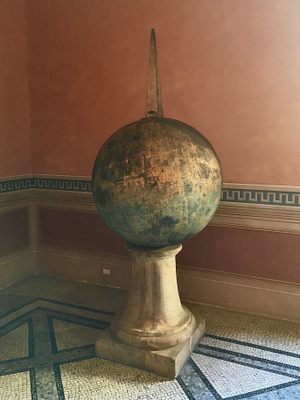About
The orb has not always lived in a museum, and it was not always so obscurely tucked away in a room that people pass by on their way to other things. It was once mounted on what was commonly called “Saint Peter’s Needle” during the Middle Ages—the obelisk that now stands prominently in the center of St. Peter’s Square.
The monolith was brought to Rome from the fabled Alexandria by Caligula in the year 37, ostensibly to honor the great Julius Caesar. However, there was once another theory: that the obelisk was not just part of a memorial to a great man from history, but also his mausoleum. His ashes, it was said, resided within the bronze sphere at the apex.
The story probably originates from the writings of Pope Leo IX, who refers to the obelisk as “memoria Caesaris, id est agulia.” The meaning of agulia is uncertain, but seems to be a corruption of the Latin for “Caesar’s needle,” which means that the translation in totality would be something like “The memory of Caesar, within Caesar’s needle.” He goes on to explain that Caesar’s sarcophagus, complete with his cremated remains, were within the globe.
This belief persisted for centuries, and historians and writers long stated with certainty that this was indeed where the illustrious Caesar was laid to rest. When the obelisk was moved to St. Peter’s Square in the 16th century, a rudimentary forensic examination of the sphere found no trace of human remains. There was simply rust and small traces of earth. Memory and honor seem to have clouded the truth in this case, and while it is an appealing idea—that Caesar’s remains were hoisted up to place him among the gods—the reality is unknown.
Related Tags
Know Before You Go
The orb can be seen in the Capitoline Museums with the purchase of a standard ticket. It resides in the medieval room.
Community Contributors
Added By
Published
June 12, 2020































